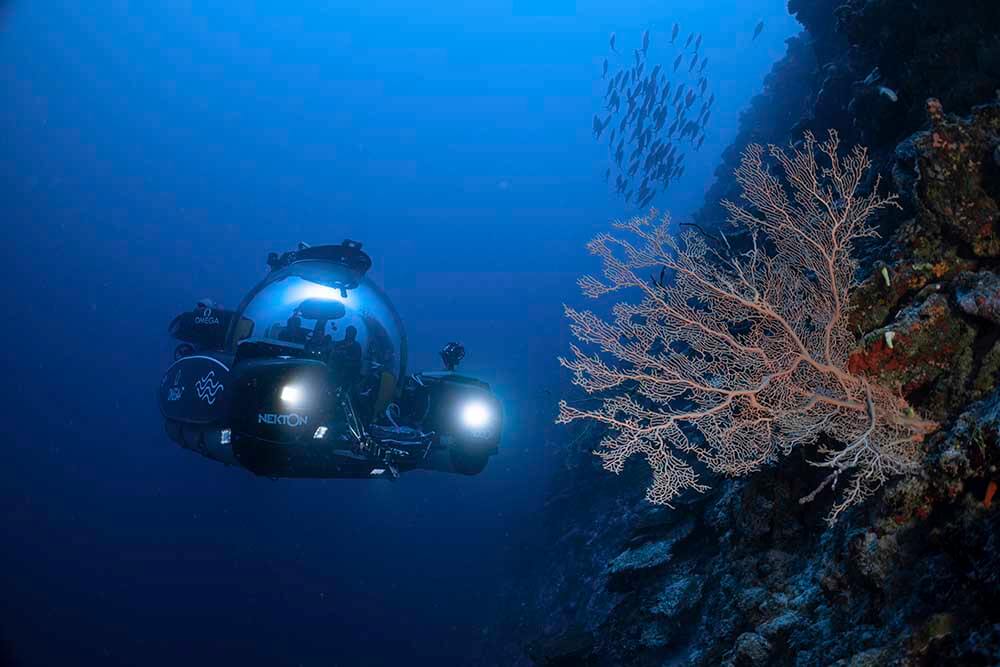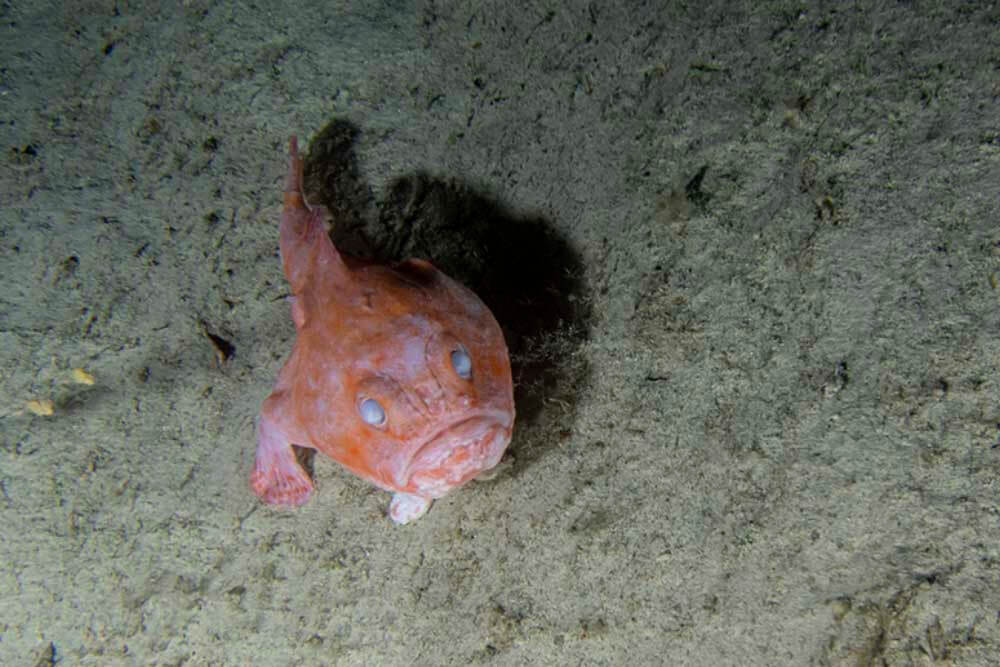
By DIVE Staff
The Nekton Maldives Mission has come to an end, with scientists announcing the discovery of what they have named the ‘Trapping Zone’, an ‘oasis of oceanic life’ observed at a depth of around 500 metres.
The Nekton scientists have described the phenomenon as a ‘previously undescribed ecosystem’, which appears to be the result of a number of species getting trapped by the surrounding landscape during each night’s ‘vertical migration’.
Vertical migration is the largest form of animal movement known to science. At dusk each night, zooplankton rise from the depths to feed on phytoplankton, which inhabits the sunlit shallows, then return to deeper waters at sunrise, to avoid predators. Hordes of other species follow the migration, including squid, small fish and the large fish (including some species of shark) that follow them.
- Related: Nekton launch survey of uncharted Maldivian waters
- Related: Nekton launch First Descent mission in the Indian Ocean

The trapping effect seems to occur due to the volcanic subsea strata and fossilised carbonate reefs which form the base of Maldivian atolls, creating steep vertical cliffs and shelving terraces which prevent the smaller creatures from diving deeper once the sun has risen.
The trapped animals are then targeted by large pelagic predators, including schools of tuna and sharks, along with other large deep-water fish including the spiky oreo (named after the biscuit) and alfonsino.
‘Image data, combined with the biological samples we have collected from our submersibles and extensive sonar mapping all point to megafauna predators such as sharks and other large fish feeding on swarms of micro-nekton – small swimming creatures that are trapped against the subsea landscape at that depth,’ said Professor Lucy Woodall, Nekton Principal Scientist.
While a trapping effect has been witnesses before on seamounts, it has not previously been linked to oceanic islands such as the Maldives, which are topologically different to seamounts, which do not rise to the surface of the water.


‘We’ve observed sharks in shallower waters quite extensively in the Maldives before, but for the first time we’ve have been able to document an immense diversity of sharks in the deep sea,’ explained Shafiya Naeem, Director General of the Maldives Marine Research Institute, which has partnered with Nekton on the expedition. ‘Tiger sharks, six-gill sharks, sand tiger sharks, dogfish, gulper sharks, scalloped hammerhead sharks, silky sharks and the very rare bramble shark have all been documented.’
Nekton’s observations of the deep-water phenomenon may be a discovery completely new to science. ‘This has all the hallmarks of a distinct new ecosystem,’ said Professor Alex Rogers, who spent more than 30 hours underwater in the mission’s submersibles. ‘The Trapping Zone is creating an oasis of life in the Maldives and it is highly likely to exist in other oceanic islands and also on the slopes of continents.’
‘The discovery of ‘The Trapping Zone’ and the oasis of life in the depths surrounding the Maldives provides us with critical new knowledge that further supports our conservation commitments and sustainable ocean management, and almost certainly support fisheries and tourism,’ said the President of the Maldives, H.E Ibrahim Mohamed Solih.
Analysis of the video and biological data is ongoing in the Maldives, Nekton’s UK headquarters in Oxford and at partner laboratories. The discovery could have important implications for other oceanic islands and the slopes of continents, sustainable fisheries management, the burial and storage of carbon and climate change mitigation.
For more information, visit www.nektonmission.org


